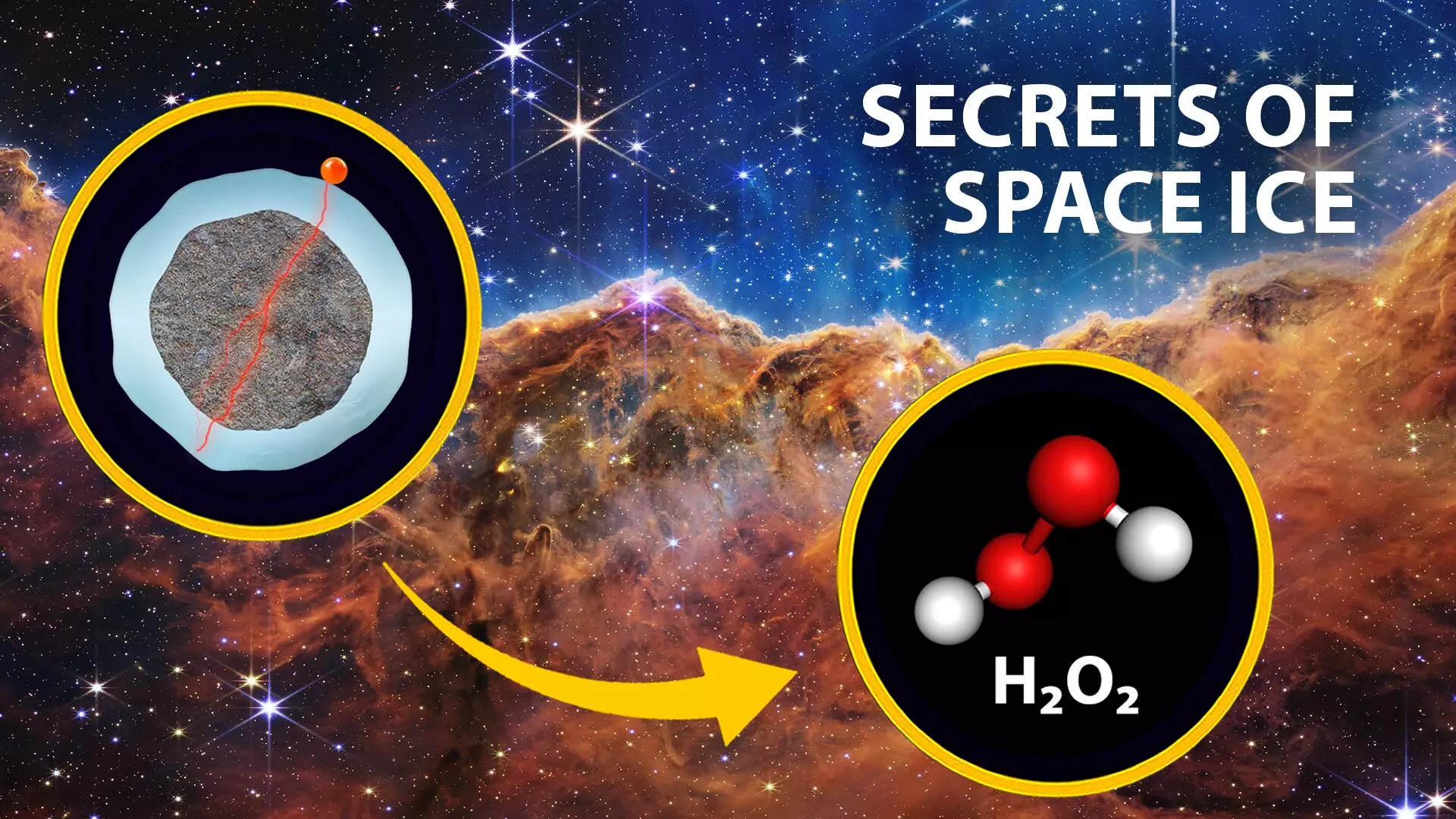From time immemorial, humanity has pondered its existence within the vastness of the universe. Echoing the sentiments of Crosby, Stills, Nash & Young, we are indeed stardust—composed of the remnants of ancient cosmic events. Today, scientists are diving deep into understanding how the fundamental chemistry that occurs in distant galaxies might be the breeding ground for the very essence of life. This exploration is not just an academic endeavor; it has profound implications for our understanding of life on Earth and the potential for life beyond our planet.
The Role of Cosmic Radiation in Prebiotic Chemistry
Recent research has focused on how low-energy electrons, emerging from cosmic radiation interacting with ice particles, catalyze the synthesis of prebiotic molecules—compounds that may have been the building blocks of life billions of years ago. Undergraduate researcher Kennedy Barnes, along with her colleague Rong Wu and their mentors from Wellesley College, has been investigating the significance of these electrons versus photons in inducing chemical reactions that lead to the formation of these essential compounds. Their pioneering work will be presented at the upcoming Fall 2024 American Chemical Society meeting, which will see thousands of presentations from across the scientific community.
As cosmic rays bombard ice particles in the vast depths of space, they produce a multitude of low-energy electrons. Previous studies have suggested that both low-energy electrons and photons can instigate similar chemical reactions. However, the findings led by Barnes indicate that the yield of prebiotic molecules from these electrons may outpace that of photons, suggesting new avenues for understanding how life-sustaining materials form in space. “Our research shows that there could be many more cosmic-ray-induced electrons in cosmic ice than previously thought, highlighting a potential shift in how we perceive the chemistry of life,” Barnes explains.
The exciting implications of this research extend beyond astrophysics into more terrestrial concerns. The same processes that researchers are studying in the cosmos offer insights regarding environmental and medical applications on Earth. In particular, the investigation into the radiolysis of water—the decomposition of water molecules due to radiation—reveals results pertinent to both environmental remediation and cancer treatments. Barnes notes, “Our findings may pave the way for using high-energy radiation in medical therapies, considering that humans are predominantly made of water.”
Furthermore, as environmentalists seek better methods to treat wastewater, the low-energy electrons generated from high-energy radiation could play a crucial role in breaking down hazardous chemicals, proving to be an invaluable tool in safeguarding our environment.
In their quest to understand the formation of prebiotic molecules, Barnes and her colleagues did not limit themselves to theoretical models. They created a laboratory setting that simulates the conditions of space using an ultrahigh-vacuum chamber that can maintain extremely low temperatures. This setup includes an electron gun and a laser-driven plasma lamp to produce low-energy electrons and photons, respectively. By bombarding nanoscale ice films with these particles, the researchers observe which molecules emerge, providing empirical evidence to support their hypotheses.
This research has resonating implications for larger cosmic structures like Europa, one of Jupiter’s moons, because its extensive ice shell presents a perfect analogue for studying extraterrestrial chemistry.
As the scientific community prepares for upcoming missions like NASA’s James Webb Space Telescope and the Europa Clipper, discoveries from this research hold the promise of unlocking data related to the composition of ices across the universe. Barnes emphasizes that her research team hopes future astrochemistry models will integrate their findings on low-energy electrons, revolutionizing how scientists simulate cosmic reactions.
With ongoing collaborations, including those with established research teams in France, the prospect of expanding the understanding of prebiotic chemistry is more tangible than ever. “We are on the brink of significant discoveries that could reshape our understanding of life’s origins,” says Barnes, reflecting on the excitement brewing within the field.
With ongoing explorations into the nature of cosmic chemistry and the emerging evidence of low-energy electrons, a new frontier is dawning. The convergence of astrophysics and molecular chemistry continues to unveil life’s mysteries, showing us not only where we come from but also re-contextualizing our understanding of life across the universe. Each research endeavor brings us one step closer to unraveling the enigmas that bind us to the stars and illuminate the path for future generations of scientists and thinkers.

